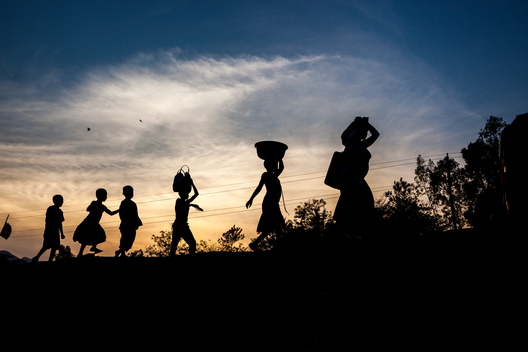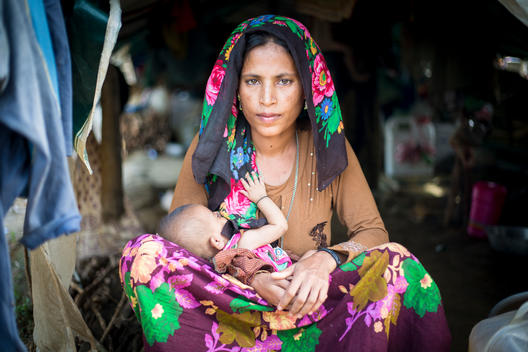70,8 million people displaced worldwide
The UN Refugee Agency’s annual Global Trends study found 70,8 million people had been driven from their homes across the world at the end of 2018.

A record of people on the run
Wars, other violence and persecution drove worldwide forced displacement to a new high in 2018 for the sixth year in a row. In its annual Global Trends report, released on 20 June 2019, the UN Refugee Agency (UNHCR) said 70,8 million people were displaced at of the end of 2018. This is the first time the 70-million line is being crossed. A sad record.
Internal displacement, refugees and asylum seekers
The figure of 70,8 million comprises three important components. First, the displacement of people inside their own countries, these numbers were 41,3 million at the end of 2018. Second is refugee numbers, which at 25.9 million are the highest ever seen. Third is asylum seekers, people who have fled their country and are still awaiting the outcome of their claims to refugee status. At of the end of 2018 the number of people seeking asylum globally was 3.5 million.
50% of the world’s refugees are children, including many who are unaccompanied or separated from their families. Two thirds from all refugees come from just five countries: Syria (6,7 million), Afghanistan (2,7 million), South Sudan (2,3 million), Myanmar (1,1 million) and Somalia (0,9 million). An end to conflict in any one of these countries has potential to significantly influence the wider global displacement picture.
84 percent shelter in the region
UNHCR produces its Global Trends report annually based on its own data, the data it receives from its partner the Internal Displacement Monitoring Centre, and data it receives from governments.
The report offers several insights, including in some instances into perceived versus actual realities of forced displacement and how these can sometimes be at odds. Among these is the notion that the world’s displaced are mainly in countries of the Global North. The data shows the opposite to be true – with fully 84% of refugees in developing countries, many of which are desperately poor and receive little support to care for these populations. Four out of five refugees remain in neighbouring countries.
The number of countries hosting the large numbers of refugees was also comparatively few. In all, two thirds of all refugees were hosted in just 10 countries. Turkey remained the world’s leading refugee hosting country in terms of absolute numbers with a population of 3.7 million refugees, mainly Syrians. After comes Pakistan (1,4 million), Uganda (1,2 million), Sudan (1,1 million) and Germany (1,1 million). Lebanon meanwhile hosted the largest number of refugees relative to its national population.

Solutions
Sadly, solutions for all this remained in short supply. Wars and conflict continued to be the major drivers with little visible progress towards peace. Around three million people were able to return to their homes in 2018 with the vast majority returning from internal displacement, but among these were people (2,3 million) returning under duress or to fragile contexts.
In 2018 UNHCR was able to resettle 81.300 refugees. According to statistics, 25 countries have resettled 92.400 refugees in total, with or without support of UNHCR.
Source: UNHCR
Pictures: UNHCR/Roger Arnold
















